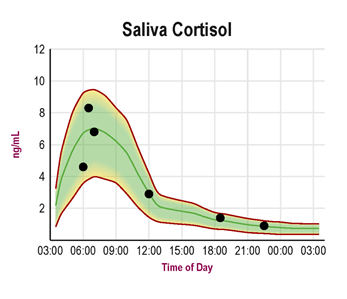Adrenal Health
Great Customer Service | Nurse Practitioners and MDs Present to Assist | Free Consultations
Great Customer Service
Nurse Practitioners and MDs Present to Assist
Free Consultations
BioPellet Consultants respectfully recommend ZRT Laboratories for Adrenal Testing and Management. Our depth in treating adrenal fatigue has proven to provide helpful insight for our physicians.
What Are Adrenal Glands?
- Cortisol: The primary stress hormone that fine-tunes our response to the stress of everyday living
- DHEA: One of the most abundant hormones in the body, and a precursor to estrogens and testosterone; also balances some of the negative effects of high cortisol
- Epinephrine / Norepinephrine: Neurotransmitters that mobilize the body’s natural “fight or flight” response in an emergency
- High Cortisol: Results in insomnia, anxiety, sugar cravings, feeling tired but wired, increased belly fat & bone loss
- Low Cortisol: Causes chronic fatigue, low energy, food and sugar cravings, poor exercise tolerance or recovery & low immune reserves
- DHEA: Out of balance adrenals can lead to high or low DHEA.
Ideal Ways to Assess Adrenal Hormones
Saliva testing has long been used as an accurate and reliable method for measuring cortisol because it is simple and non-invasive, and patients can collect these samples multiple times per day. It is easy to assess DHEA in these samples too.
A newer method that’s just as reliable as saliva testing has also been gaining ground – dried urine testing. Studies show that urine is just as effective for measuring cortisol and DHEA levels, and it is also simple enough for patients to collect multiple times per day.
Due to the nature of the sample collection, there is some difference between saliva and urine testing for diurnal cortisol.
The added benefit to dried urine testing is that epinephrine and norepinephrine can be measured at the same time, so patients who want a complete adrenal assessment can now get all four key markers together.
Cortisol Awakening Response
The Cortisol Awakening Response – also called CAR – reveals more detailed clues that help in assessing adrenal hormone/HPA Axis dysfunction. This testing is often useful for cases of PTSD, major depression, chronic fatigue syndrome, and other severe stress conditions.
During a normal cortisol awakening response, adrenal hormone levels should increase 50% in the first 30 minutes after waking for the day and then begin to progressively drop through the afternoon and evening. To capture this response, three – rather than one – morning saliva collections are needed to properly chart the diurnal cortisol curve.
Cortisol Awakening Response Sample Collection
6-Tube Collection: Six cortisol collections in 24 hours is the most common method for assessing CAR. Start saliva collection within five minutes of walking for the day, followed by a second sample at 30 minutes, and a third sample at 60 minutes. The rest of the diurnal rhythm can be assessed at the normal time intervals – noon, evening, and night (shown below).
4-Tube Collection: Alternately, CAR can be assessed with four cortisol collections in 24 hours. When using this method, collect a sample immediately upon waking, 30 minutes after waking, then at noon or evening, and night.



Share On: